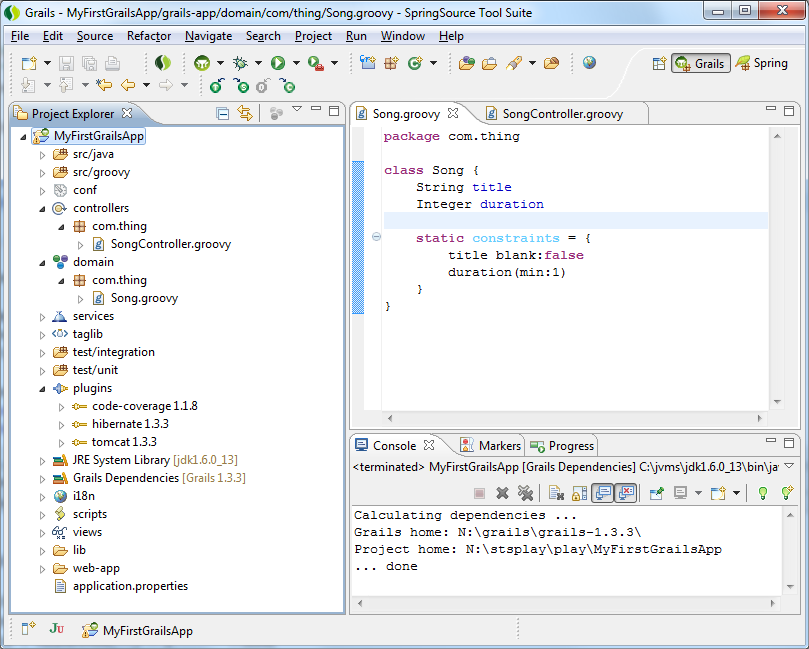The recently released STS 2.3.3 M2 introduced a series of enhancements to our Grails support for Eclipse. In this article I'll be discussing what you can expect to find if you try it out (grab it here: SpringSource Tool Suite).
Groovy-Eclipse
The grails tools actually build on and extend the Groovy-Eclipse support, which is developed by the same team at SpringSource. Earlier this year the Groovy-Eclipse tools won 'Best Open Source Developer Productivity Tool' at
Eclipse-Con 2010. You can read more about the latest enhancements in the recent Groovy-Eclipse 2.0.2 release here:
New and Noteworthy. I'm not going to focus on Groovy-Eclipse here, but some highlights from that release were:
- refactoring support: now supporting extract method, extract constant, extract local variable
- improvements in code formatting and indentation
Now, onto Grails!
Getting a new perspective
There is now a new Grails perspective to better organize the views and widgets we have been adding to STS. You can open the perspective in the normal way (
Window>OpenPerspective>Grails). In the new perspective the first thing to notice is that the Eclipse project explorer is open, rather than the package explorer. The project explorer is using a custom content provider that shows a view of a grails project that should be more familiar to a grails developer:

New labels and icons are in place for the groups of similar entities: domain objects, controllers, views, etc. However the biggest change is the new plugins folder. Previously when working with a grails project the plugin dependencies were tricky to see in the UI, being hidden in the classpath container and via some Eclipse linked source folder entries. Now in the project explorer it is much more obvious what the application dependencies are.
Also, related to plugins, we have a new Grails Plugin Project wizard. This is very similar to the Grails Project Wizard, but instead of running create-app, it will cause the create-plugin command to run. With this new wizard and the new support we have for local (inplace) plugins, it is much easier to develop your application following a plugin oriented architecture…

